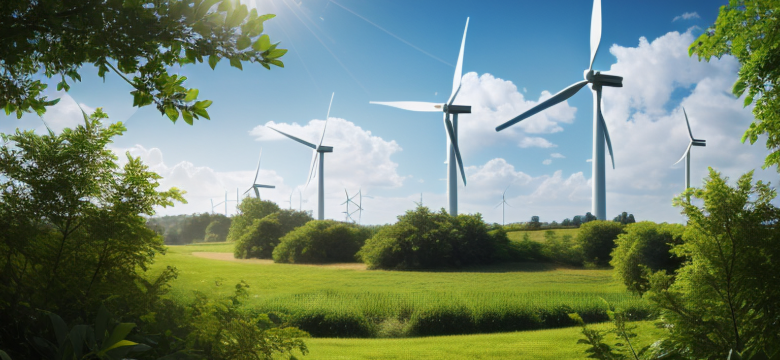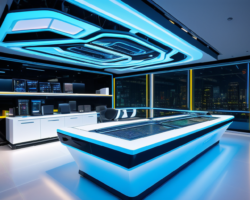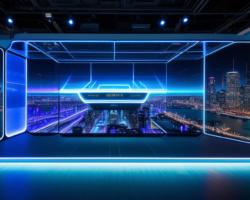Have you ever stopped to think about how simple innovations can create waves of change in our lives? It’s fascinating to see how a few clever ideas can transform entire industries and elevate our everyday experiences. These innovations, often born from the desire to improve efficiency or enhance quality, ripple through society in ways we might not even notice at first. For instance, consider how the introduction of smartphones revolutionised communication. What once required a hefty device and a landline is now encapsulated in a pocket-sized gadget that connects us to the world. This shift has not only made communication instant but has also spurred advancements in countless areas such as education, entertainment, and business.
Moreover, the beauty of these innovations lies in their simplicity. They remind us that sometimes the best solutions are not the most complex. For example, think about the impact of reusable bags. This small change in how we shop has led to significant reductions in plastic waste, showcasing how one simple idea can contribute to a larger environmental movement. In a world where we often chase after the latest technology, it’s essential to appreciate these straightforward innovations that are quietly reshaping our lives for the better.
The Power of Minimalism
Minimalism is more than just a design trend; it’s a philosophy that has reshaped industries and our daily lives. Imagine walking into a room that feels open and airy, where every item serves a purpose. This simplicity not only creates a calming environment but also enhances functionality. In technology, for instance, minimalist design has led to user-friendly interfaces that make complex tasks feel effortless. Think about how smartphones have evolved—gone are the days of cluttered screens filled with apps. Instead, we now enjoy sleek designs that prioritise essential functions.
In architecture, minimalism has transformed the way we build. Less is more isn’t just a catchy phrase; it’s a guiding principle that reduces construction waste and energy consumption. By focusing on the essentials, architects create spaces that are both beautiful and efficient. This shift towards minimalism is not just aesthetic; it has profound implications for sustainability and resource management.
Moreover, the ripple effects of minimalism can be seen in various sectors:
- Technology: Streamlined devices that enhance user experience.
- Fashion: Capsule wardrobes promoting sustainability.
- Food: Simplified menus focusing on quality over quantity.
Ultimately, embracing minimalism is about making conscious choices that lead to a more fulfilling and less cluttered life. It’s a reminder that sometimes, simplicity is the ultimate sophistication.
Smart Technology Integration
In today’s fast-paced world, the integration of smart technology into our daily lives has become nothing short of revolutionary. Imagine a world where your coffee brews itself just as you wake up, or your thermostat adjusts the temperature based on your preferences without you lifting a finger. This is the magic of smart technology, and it’s transforming our interactions with the environment around us.
Smart devices are not just about convenience; they are also about enhancing efficiency. For example, smart home systems allow homeowners to control lighting, heating, and even security systems remotely, making everyday tasks simpler and saving energy in the process. With the rise of the Internet of Things (IoT), various devices are now interconnected, paving the way for a more automated and connected future.
Consider the benefits:
- Convenience: Effortlessly manage your home environment.
- Energy Efficiency: Reduce energy consumption and costs.
- Enhanced Security: Monitor your property in real-time.
One of the most exciting aspects of smart technology is its potential for innovation. As we continue to embrace these advancements, we are not just improving our quality of life; we are also laying the groundwork for a more sustainable future. The possibilities are endless, and it’s clear that smart technology is here to stay, making our lives easier, safer, and more efficient.
Home Automation
Home automation is like having a personal assistant that never sleeps. It takes the mundane tasks of daily life and turns them into a seamless experience, allowing you to focus on what truly matters. Imagine walking into your home, and the lights automatically adjust to your preferred brightness, the thermostat sets to a comfortable temperature, and your favourite playlist starts playing. Sounds dreamy, right? This is the magic of smart home technology!
These systems simplify daily tasks and enhance energy efficiency in ways we never thought possible. For instance, with a smart thermostat, you can manage your heating and cooling remotely, ensuring your home is always at the right temperature when you arrive. This not only boosts your comfort but also significantly reduces energy bills. Smart lighting systems can be programmed to turn off when you leave a room, further cutting down on unnecessary energy consumption.
Moreover, home automation contributes to a more sustainable lifestyle. By optimising energy use, you’re not just saving money; you’re also doing your bit for the planet. With features like remote monitoring and control, homeowners can easily track their energy usage and make adjustments as needed. It’s like having a dashboard for your home’s energy consumption!
In addition to energy management, security is another critical aspect of home automation. Imagine being able to check your security cameras or lock your doors from anywhere in the world. This peace of mind is invaluable, especially in today’s fast-paced world. Home automation is not just about convenience; it’s about enhancing your quality of life.
Energy Management
In today’s fast-paced world, has become more crucial than ever. With rising energy costs and increasing environmental concerns, households are seeking innovative ways to optimise their energy consumption. Smart energy management systems are stepping up to the plate, offering a blend of technology and sustainability that transforms how we use power.
These systems not only help in reducing costs but also play a significant role in minimising our environmental impact. By employing advanced monitoring and control technologies, homeowners can gain real-time insights into their energy usage. Imagine having the ability to track your electricity consumption as easily as checking your social media feed!
Some key features of smart energy management systems include:
- Automated Scheduling: Set your appliances to operate during off-peak hours, saving money and reducing strain on the grid.
- Usage Analytics: Understand which devices consume the most energy and adjust your habits accordingly.
- Remote Control: Manage your energy consumption from anywhere, ensuring that you never waste power when you’re not home.
By embracing these innovations, we not only enhance our quality of life but also contribute to a more sustainable future. The ripple effects of energy management innovations extend beyond our homes, influencing industries and communities, proving that small changes can lead to significant impacts.
Security Enhancements
The world of smart security systems has taken a giant leap forward, bringing with it a wave of innovations that are reshaping how we protect our homes and loved ones. Imagine being able to keep an eye on your property from anywhere in the world, all thanks to your smartphone! These systems are not just about convenience; they are about peace of mind. With features like real-time alerts and remote monitoring, homeowners can now respond to potential threats instantly, effectively turning their homes into fortresses.
One of the most exciting advancements is the integration of AI technology into security cameras. These smart cameras can differentiate between a harmless squirrel and an intruder, significantly reducing false alarms. Furthermore, many systems now come equipped with facial recognition capabilities, allowing homeowners to know exactly who is at their door before they even answer it. This level of security was once the stuff of science fiction, but it’s now a reality.
Moreover, let’s not forget about the role of smart locks. These devices offer keyless entry and the ability to grant temporary access to guests, making it easier to manage who comes and goes. With all these enhancements, it’s clear that the future of home security is not just about keeping intruders out; it’s about creating a safe and connected environment.
Wearable Technology
Wearable technology is not just a trend; it’s a revolution in how we approach our health and fitness. Imagine having a personal trainer, nutritionist, and health monitor all wrapped around your wrist! These devices, from smartwatches to fitness trackers, provide real-time data that empowers users to make informed lifestyle choices. With features like heart rate monitoring, step counting, and sleep tracking, wearable tech acts as a constant companion in our quest for better health.
But it’s not just about tracking our physical activities. These gadgets also offer insights into our overall well-being. For instance, many wearables can sync with mobile apps, allowing users to analyse their data over time. This integration of technology into daily life encourages a proactive approach to health management. Think of it as having a personal health assistant that nudges you towards your fitness goals.
Moreover, the impact of wearable technology extends beyond personal health. In industries like healthcare, these devices are being used to monitor patients remotely, significantly improving patient outcomes while reducing healthcare costs. As we embrace this technological wave, it’s clear that wearable technology is not just enhancing our lives; it’s transforming them.
Eco-Friendly Solutions
In today’s world, the push for is more crucial than ever. As we grapple with the consequences of climate change and environmental degradation, innovations focused on sustainability are emerging as beacons of hope. These solutions not only aim to reduce our environmental footprint but also enhance the quality of life for future generations. Imagine a world where every product you use contributes positively to the planet—sounds like a dream, right? Well, it’s becoming a reality!
One of the most exciting developments is the rise of biodegradable materials. These materials are revolutionising packaging and consumer goods by offering sustainable options that break down naturally. Unlike traditional plastics that linger in landfills for centuries, biodegradable alternatives decompose into harmless substances, significantly reducing waste. A growing number of companies are adopting these materials, and it’s encouraging to see consumers supporting this shift.
Moreover, advancements in renewable energy technologies are making clean energy more accessible and affordable. Solar panels and wind turbines are no longer novelties; they are becoming commonplace in homes and businesses. This shift towards sustainable energy sources is not just about reducing carbon footprints; it’s about creating a resilient future. The table below highlights some key benefits of renewable energy:
| Benefit | Description |
|---|---|
| Reduced Emissions | Significantly lowers greenhouse gas emissions, combating climate change. |
| Energy Independence | Reduces reliance on fossil fuels, promoting energy security. |
| Job Creation | Generates new employment opportunities in the green technology sector. |
| Cost Savings | Long-term savings on energy bills and maintenance costs. |
In conclusion, the drive towards eco-friendly solutions is not merely a trend; it’s a necessary evolution. By embracing biodegradable materials and renewable energy, we can pave the way for a sustainable future. So, why not join the movement? Every small change contributes to a larger impact!
Biodegradable Materials
In recent years, the surge in environmental awareness has sparked a revolution in the use of . These innovative substances are designed to break down naturally, providing a sustainable alternative to traditional plastics that often linger in landfills for centuries. Imagine a world where your packaging doesn’t contribute to the ever-growing mountains of waste! This shift not only helps in reducing pollution but also promotes a healthier planet.
Biodegradable materials can be derived from various sources, including plants, microorganisms, and even agricultural waste. They are engineered to decompose through natural processes, thanks to the action of microorganisms, heat, and moisture. For instance, materials like cornstarch-based plastics and compostable paper are gaining traction in packaging and consumer goods, proving that sustainability doesn’t have to compromise functionality.
Moreover, the adoption of biodegradable materials is not just a trend; it’s a necessity. As consumers become more conscious of their environmental impact, companies are responding by integrating these materials into their products. This shift can lead to significant reductions in landfill waste and lower carbon footprints. It’s a win-win situation: businesses can enhance their brand image while contributing to a greener future.
To illustrate the impact of biodegradable materials, consider the following table that compares traditional plastics with biodegradable alternatives:
| Property | Traditional Plastics | Biodegradable Materials |
|---|---|---|
| Decomposition Time | 100-1000 years | 3-6 months |
| Environmental Impact | High | Low |
| Source | Petroleum-based | Plant-based or organic |
In conclusion, the rise of biodegradable materials is a beacon of hope in the fight against pollution and waste. By embracing these eco-friendly options, we can all play a part in fostering a sustainable future, one product at a time.
Renewable Energy Innovations
In recent years, have surged to the forefront of the global energy conversation, transforming the way we think about power generation. With the ever-increasing demand for cleaner energy sources, technologies such as solar panels, wind turbines, and hydropower systems have become more efficient and affordable. This shift not only addresses environmental concerns but also promotes energy independence for many nations.
For instance, solar energy has seen a remarkable evolution, with advancements in photovoltaic cells that now offer higher efficiency rates and lower production costs. As a result, homeowners and businesses alike are tapping into this abundant resource, reducing their reliance on fossil fuels. Similarly, wind energy has benefited from the development of larger, more efficient turbines that can harness wind power even at lower wind speeds.
Moreover, the integration of smart technology in renewable energy systems enhances their effectiveness. For example, smart grids allow for better energy distribution and management, ensuring that renewable sources are utilised to their fullest potential. These innovations not only contribute to reducing carbon footprints but also create a ripple effect, leading to job creation in the green technology sector.
In summary, as we embrace these renewable energy innovations, we pave the way for a sustainable future, where energy is both clean and abundant. The question remains: are we ready to fully commit to this green revolution?
Frequently Asked Questions
- What are some examples of simple innovations that have made a big impact?
Simple innovations like smart home devices, biodegradable packaging, and energy-efficient appliances have transformed daily life and industries. These innovations streamline processes, enhance convenience, and promote sustainability.
- How does minimalism contribute to innovation?
Minimalism focuses on reducing complexity and waste, which leads to more efficient designs and processes. By embracing ‘less is more’, industries can create products that are not only functional but also environmentally friendly.
- What is the role of wearable technology in health?
Wearable technology empowers users by providing real-time health data and insights. This information helps individuals make informed decisions about their fitness and overall well-being, leading to healthier lifestyles.
- How do smart energy management systems work?
Smart energy management systems monitor and control energy consumption in real-time. They help households reduce costs and environmental impact by optimising energy use, making them a vital part of sustainable living.
- What are biodegradable materials and why are they important?
Biodegradable materials break down naturally, reducing landfill waste and pollution. They provide sustainable alternatives to traditional products, contributing to a cleaner environment and a greener future.





